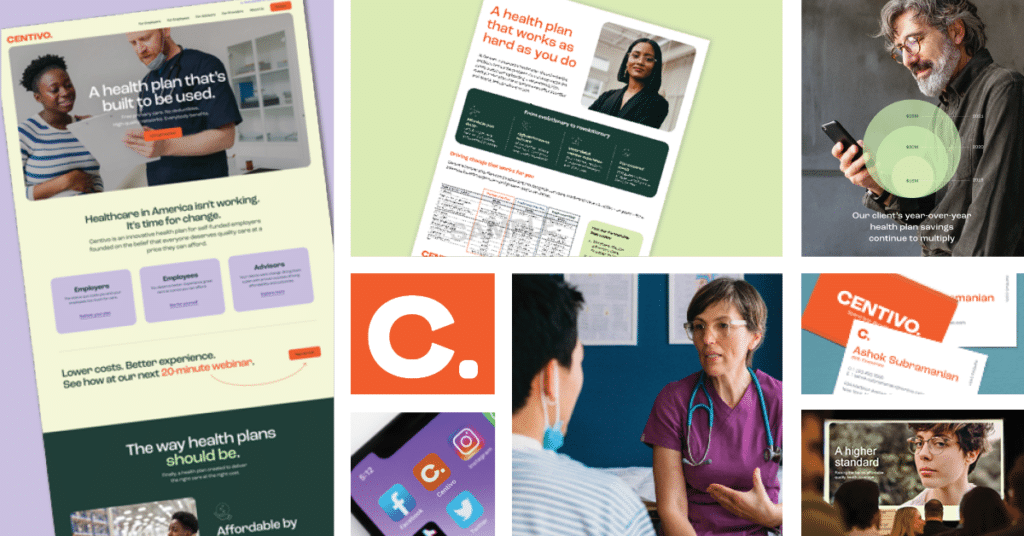There have already been plenty of ‘takes’ about Haven’s demise. But I don’t think one has been told enough – which is that (1) the problems in healthcare aren’t going away, (2) shame on us if we just throw up our hands and walk away from the real-life challenges facing millions of Americans, and (3) that a quiet revolution among employers is already underway. It is one in which employers, employees, and providers can all win financially, receive better care, and have the best healthcare experience – simple, predictable, and affordable – that they have had in at least the last quarter-century.
There’s no denying that the U.S. healthcare system is not working for providers, consumers or employers. Prices are opaque and surprise bills have become so prevalent that we need legislation to solve the issue. Family premiums have risen more than twice that of inflation in the last 10 years1 while 30% of our healthcare dollars go to waste, fraud, and abuse.2 Over half of adults with employer health coverage report that they or someone in their household has skipped or delayed medical care or prescription drugs in the past 12 months because of the cost.3 Sixty-six percent of Americans fear they won’t be able to afford health care this year.4 Primary care doctors are overworked and underpaid, facing record levels of burnout and spending half their day interacting with electronic health records.5 And, as we have written about before, COVID-19 has laid bare the wreckage of our current healthcare system that fails on public health and succeeds on high-dollar, high-margin elective procedures.
This should not be a surprise, considering our system has, for far too long, been unnecessarily complex, with misaligned incentives, a lack of transparency in pricing, and under-investment in primary care. Investments in health tech startups continue to grow, and there has been incremental improvement with third-party solutions such as navigation support, telemedicine, direct primary care, and more. But we’re only going to solve the problem if we deploy a holistic solution that tackles the healthcare system from the supply side first, providing better, more affordable care on a large scale.
That’s what Haven – a joint venture among Amazon, JPMorgan Chase & Co. and Berkshire Hathaway – had aspired to do and what gave us great hope. Instead, with its failure, some have conveyed a sense of despair that perhaps the U.S healthcare system’s problems are unfixable. Too big. Too complex. Too intractable. But while Haven had some incredible leaders and thinkers, they faced internal and structural problems. Haven’s demise should not be considered foreboding of the greater goal, especially since how it was organized and governed likely had more to do with its failure than its actual intent.
Like Haven, we at Centivo have set out to address the structural causes of the affordability crisis in healthcare but with neither the constraints of the legacy players nor the organizational or governance barriers of a multi-employer coalition. We recognize it is a challenge on a grand scale. And we understand that it will take so much more than building a cool app or yet another solution that sits atop the status quo. Yet we approach the challenge with both humility and audacity: humility because it is hard and audacity because it is necessary.
What we have seen is that healthcare can and is being fixed. Here’s what we’ve learned that makes us optimistic:
- Good providers want to be held accountable. At the end of the day, medical professionals are in this to heal the sick and want to do what’s right for patients. Taking on more accountability – financially, clinically, and experientially – allows them to build a system that addresses real needs to treat patients holistically. Fixed payments that are divorced from a specific visit or CPT code and gain sharing for superior performance allows them to do this. They need payers to collaborate with them.
- Scale is overrated. Yes, I just said it. It’s simply a fallacy that you need huge market share to get better rates. It’s OK to start small and not be everywhere all at once. Look at Southwest Airlines or RyanAir – they had zero scale at inception but gained structural cost advantages in a daunting labor and capital-intensive industry due to intelligent market selection, elimination of the hub and spoke model, standardization of aircraft leading to efficiencies in parts, maintenance, and training, and an overall product designed for affordability. In healthcare, similar themes can apply. A lack of scale can drive better value so long as the entire business model can be innovated: allow providers to win on upside if they are able to control total cost, connect providers with employers to gain commercial market share, reduce member leakage to drive coordinated care and patient loyalty, and reward providers who themselves have invested to serve as clinically integrated networks and are organized for access. If providers can lower their operating costs and secure superior patient value, they are happy to offer competitive rates.
- There’s proof. Innovative companies are making bold moves and seeing results. We’re not the first ones or the only ones with some of these ideas – although as Haven has proven, it’s easy to say and hard to do. Disney, Boeing, Intel, and General Motors may be well known examples of organizations that have embraced direct contracting but others – both large and small – have made great strides in offering their employees better, more affordable care through models such as the Centivo Partnership Plan. Our clients too have seen large and significant changes in their employees’ healthcare utilization, with increases in primary and preventive care, declines in ER visits, and material market share shifts from low-value providers to high-value ones. They’ve saved a lot of money for themselves and for their employees.
What’s needed to achieve true change?
As we look to the future of healthcare in the U.S., there are certain fundamental changes that must be made to break free from the old expensive and ineffective model:
- Aligning incentives and getting compensation right. Providers will take on more accountability if they are compensated to manage the risk. They’re the people with the right knowledge of how to manage sick patients. Our partners have taken steps – such as integrating behavioral health specialists into primary care practices, expanding access and integrating virtual care, establishing roles to manage patient navigation and chronic care management – to better manage patients and lower overall costs.
- Maniacally innovating toward low-cost without compromising quality. Back to the airline analogy: people thought it would never work to build airlines that avoided Washington National, LaGuardia, and Heathrow. The disruptors proved them wrong. In healthcare, we’ve tried and failed at giving patients a phone book of every doctor and hospital in the country and expecting them to figure out who provides quality care and how prices differ. We’ve cost- and risk-shifted to employees. That’s failed too. Because patients trust their doctors and rely on them for advice, we need to create a health system structure that is structurally organized to put primary care in the center and to organize the rest of the healthcare ecosystem for value. And we need to ensure that it bolsters underpaid and overworked primary care providers, giving them the freedom to manage and coordinate their patients’ care with the help of price and quality data.
- A catalyst for employer action. Any healthcare solution that’s going to work must be be locally oriented because healthcare is local. Virtual care is an essential arrow in the quiver but is no panacea. And hoping for ‘national solutions’ is simply a root cause of inaction. It takes a lot of time to build something market by market and from the ground up, and employers don’t have the capacity to run a health insurance system when they are focused on running their business. The key is having an organizing entity that’s purpose-built for employers to band together around simplicity, predictability, and affordability. That’s where Centivo comes in.
- Greater agility. We need to move fast and have the courage to be bold. Incremental changes don’t move the needle enough and just make it harder to unwind.
Instead of looking for saviors – like Haven or other like-minded approaches that promise dramatic changes – we must start from the ground up – market by market, and employer by employer. As healthcare entrepreneurs for 15+ years, we at Centivo know mistakes will be made. But the key is learning from these mistakes, which creates a stronger product and a differentiated offering that actually works. Being in the market and talking to hundreds of employers and their employees – not just building something to benefit a small group of select companies in a closed ecosystem – is the only way to learn, refine and truly change the healthcare system. This is what we do, and will continue to do, until the elusive promise of healthcare affordability is finally restored.
1 Kaiser Family Foundation Employer Health Benefits Survey, 2018-2020.
2 Institute of Medicine Report, September 2012. https://khn.org/morning-breakout/iom-report/
3 Kaiser Family Foundation/LA Times Survey of Adults with Employer- Sponsored Insurance, May 2, 2019.
4 “66% of Americans Fear They Won’t Be Able to Afford Health Care This Year,” CNBC, Jan 5, 2021.
5 “For Each Patient Visit, Physicians Spend About 16 Minutes on EHRs, Study Finds,” Fierce Healthcare, Jan 14, 2020.

